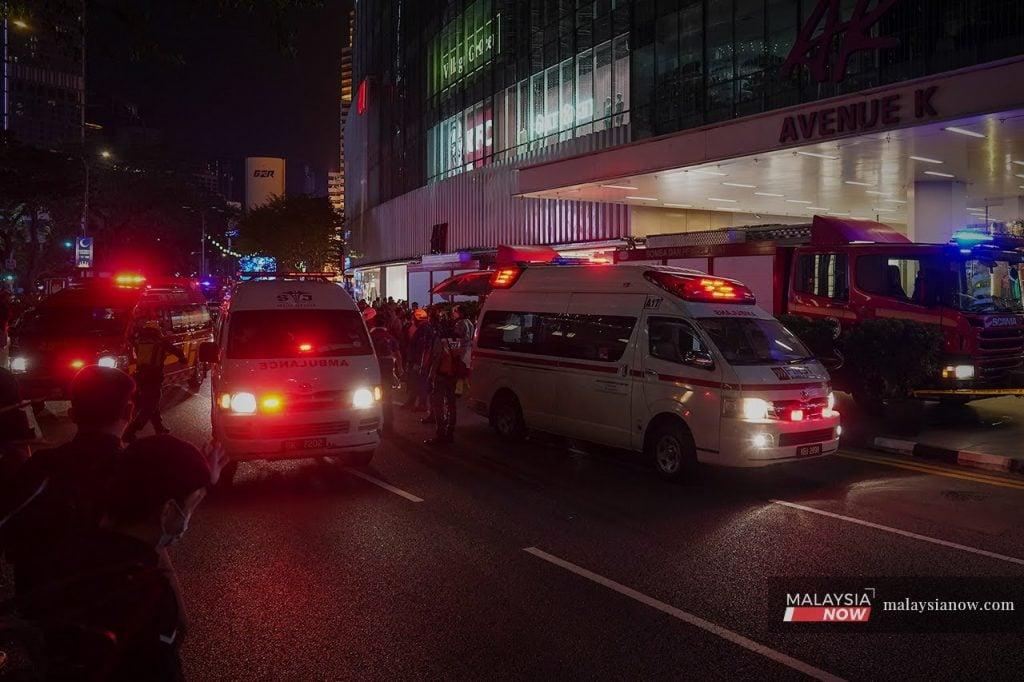Technical problems, communication failure behind LRT collision, says transport minister
Wee Ka Siong says the objective of the investigation was to determine the cause of the collision to improve public transport services, not to prove the guilt of any party.
Just In
Technical issues and communication failure between the operations control centre (OCC) and the hostler (driver) are among the factors that led to the collision between two LRT trains on the Kelana Jaya line on May 24, says Transport Minister Wee Ka Siong.
He said the findings were part of the report by the investigative committee set up to probe the collision which occurred between the Kampung Baru and KLCC stations. The report was presented to the Cabinet on June 9.
Speaking at a virtual press conference today, Wee said the incident involved a collision between train number 40 which was carrying no passengers and had technical problems, and train number 81 which had 213 passengers and had departed without getting accurate information.
He said Train 40 had experienced technical problems at 6.26pm on the day of the crash involving one of its two vehicle on-board communication (VOBC) systems.
One of the VOBCs malfunctioned, cutting communication with the OCC and forcing the train to empty its passengers at the next station. It was then removed from service and sent for maintenance at the Lembah Subang depot via the automatic train operation (ATO) control.
However the second VOBC also malfunctioned at 8.13pm while the train was en route to Lembah Subang.
“The OCC could not control Train 40 when both its VOBCs malfunctioned,” Wee said.
“As such, the hostler was ordered to manually drive the train to the nearest station – Dang Wangi – in order for it to be reset to ATO mode.”
He said the investigation found that during the process of driving the train to be reset to ATO mode, both the hostler and OCC officer or controller had ignored certain critical SOPs, resulting in Train 40 being inadvertently moved northbound to Gombak instead of southbound to the depot.
Meanwhile, he said, Train 81 had been held back at the KLCC station and placed under manual route reservation (MRR) status, which was protection for Train 40 before it could be operated via ATO.
“However, Train 81 was released to depart from the KLCC station heading towards the Kampung Baru station without getting accurate confirmation that Train 40 had been reset to ATO.
“This situation led to the collision between Train 40 and Train 81,” he said.
Wee said the hostler had acted unintentionally as the information on the track section number at the time was insufficient, whereas periodic reporting to the OCC should have taken place.
He added that the objective of the investigation was to determine the actual situation and cause of the collision with the aim of preventing a recurrence and improving public transport services, not to prove the guilt of liability of any party.
Meanwhile, transport ministry secretary-general Isham Ishak, who led the investigative committee, said the findings revealed that the maintenance conducted by Prasarana was in order and according to the manuals.
He said there was no discrepancy or anomaly in the maintenance of the trains although SOPs were not completely obeyed as there should have been a checklist to prevent such incidents.
“VOBC failure doesn’t happen every day, it seldom happens. But when it happens, there must be an SOP which everyone understands and follows on how to handle manual trains,” he said.
Subscribe to our newsletter
To be updated with all the latest news and analyses daily.
